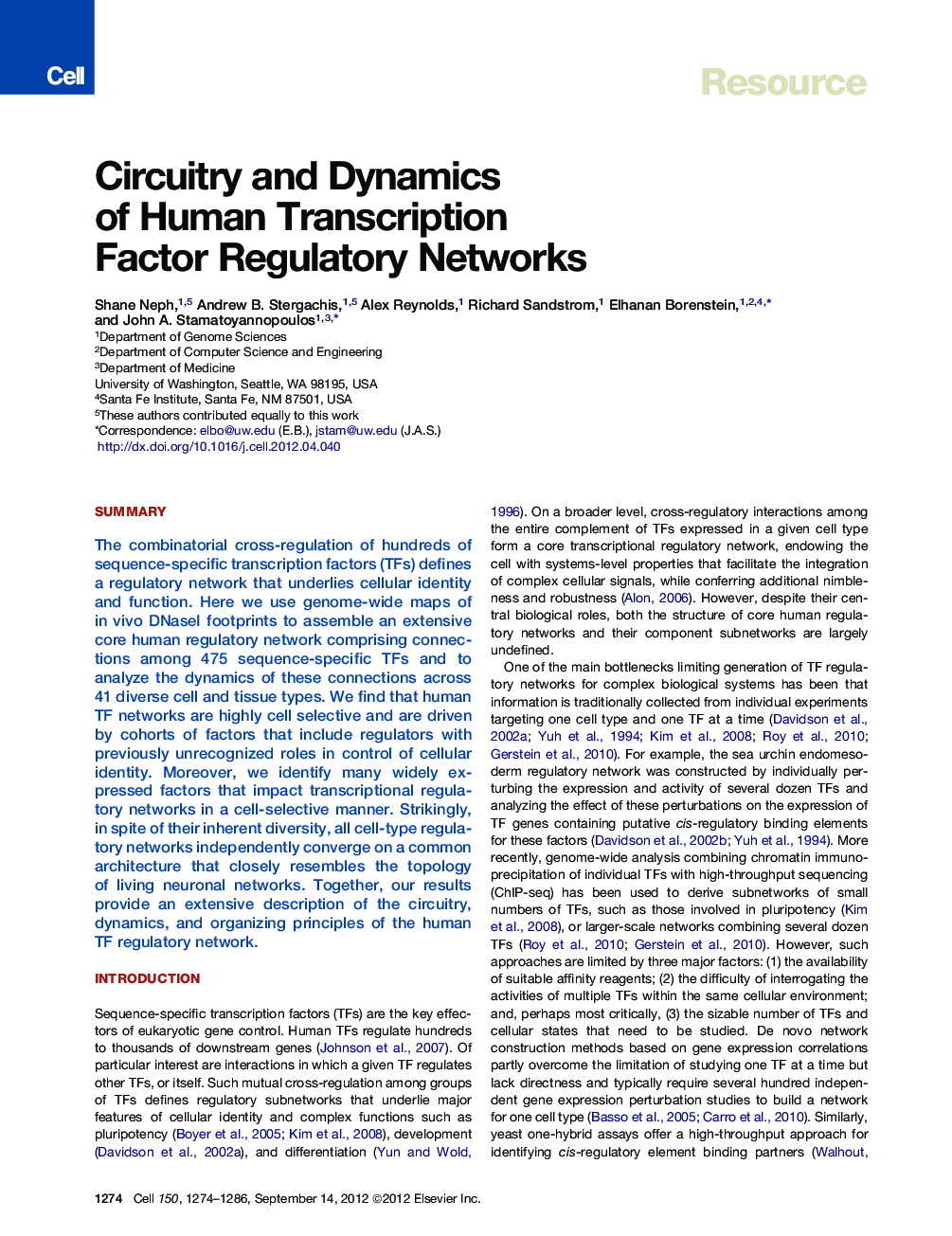| Article ID | Journal | Published Year | Pages | File Type |
|---|---|---|---|---|
| 2035954 | Cell | 2012 | 13 Pages |
SummaryThe combinatorial cross-regulation of hundreds of sequence-specific transcription factors (TFs) defines a regulatory network that underlies cellular identity and function. Here we use genome-wide maps of in vivo DNaseI footprints to assemble an extensive core human regulatory network comprising connections among 475 sequence-specific TFs and to analyze the dynamics of these connections across 41 diverse cell and tissue types. We find that human TF networks are highly cell selective and are driven by cohorts of factors that include regulators with previously unrecognized roles in control of cellular identity. Moreover, we identify many widely expressed factors that impact transcriptional regulatory networks in a cell-selective manner. Strikingly, in spite of their inherent diversity, all cell-type regulatory networks independently converge on a common architecture that closely resembles the topology of living neuronal networks. Together, our results provide an extensive description of the circuitry, dynamics, and organizing principles of the human TF regulatory network.
Graphical AbstractFigure optionsDownload full-size imageDownload high-quality image (208 K)Download as PowerPoint slideHighlights► Extensive transcription factor regulatory networks for 41 human cell and tissue types ► Regulatory networks are highly cell selective and expose regulators of cellular identity ► Network analysis identifies cell-selective functions for commonly expressed regulators ► The circuitry of human transcription factor networks mirrors living neuronal networks
